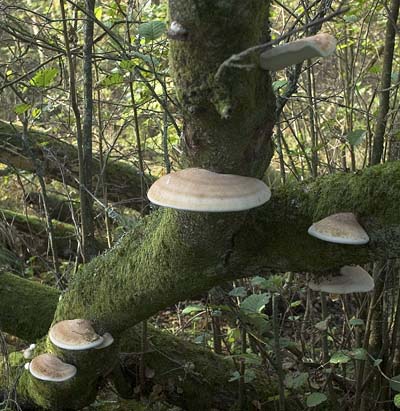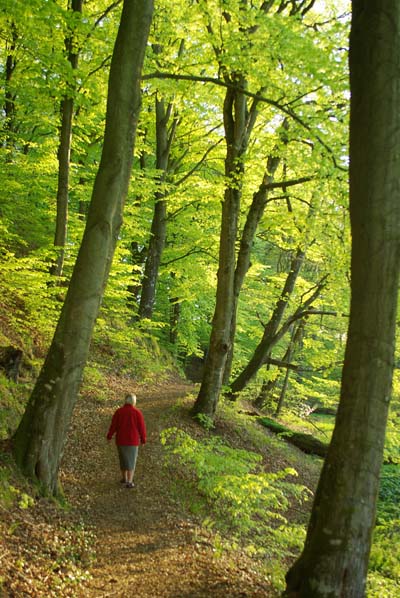The forest
The forests around Silkeborg came in the ownership of the crown during the Reformation in 1536. Then periods of private ownership came before the forests were again bought back by the state in 1823. For centuries it has been one of Denmark's largest forest areas. The forests you can find very large and old stands with beech, which are often placed along the many lakes of the region, like here along Ørnsø.
Dead wood in the untouched forest
The slope has been designated as untouched forest since 1994, but has probably remained untouched far earlier, as the steep slopes are difficult to cultivate. Now trees are not planted or felled, and the natural dynamic processes can run freely.
Beech trees are close to 200 years old. When the trees grow so old, they lose their defense against sponges and bacteria that attack the tree. Some have begun to fall into decay; parts of the tree die, and the big branches break off. It eventually results in the whole tree being dying. When a tree falls, only the path is cut free and the rest of the tree is allowed to lie. Old dead trees are of great benefit to bats and birds that can make clear holes, and for a wealth of tree insects and mushrooms that move into the dead wood.
The swamp forest
Along the lake there is a fringe of swamp forest with old alder, willow and ash. Trees standing with the roots in water have adapted to the special conditions. Old alder trees can form stilt roots that protrude from the stem and support the tree. When the inner roots rot away, it looks as if the tree is on stilts. In that part of the roots there’s above water, air passes through small valves in the bark and far into the roots
under the water. The swamp forest is born of the numerous wellsprings in the slope and not, as you would think, of the lake's water. This can be seen from the large amounts of ocher that is deposited in the
spring water. It is groundwater that is popping out and it has a constant temperature of approx. 7º C. The nutritious moist soil gives a species-rich flora with for instance ferns, marsh marigold and horsetail.
Natural forestry
All state forests are operated according to natural principles, which means that operations are based on imitating the forest's own natural processes. The main principles are that the forest rejuvenates itself, that large areas are not being felled at once and no pesticides are used. Natural forestry provides a forest image, where several species of trees of different ages are mixed, and where there is room for the animals and plants of the forest. It gives a forest that is robust of climate change, storms and attacks of harmful insects and fungi.


